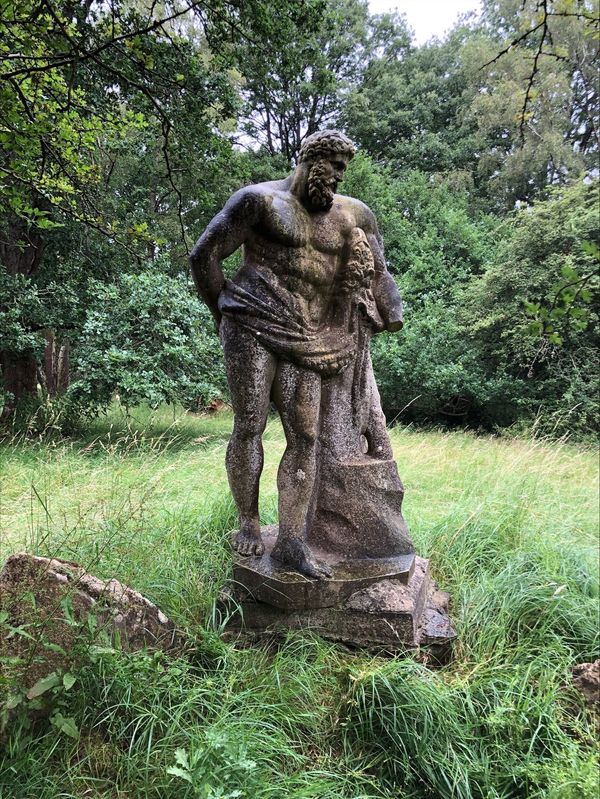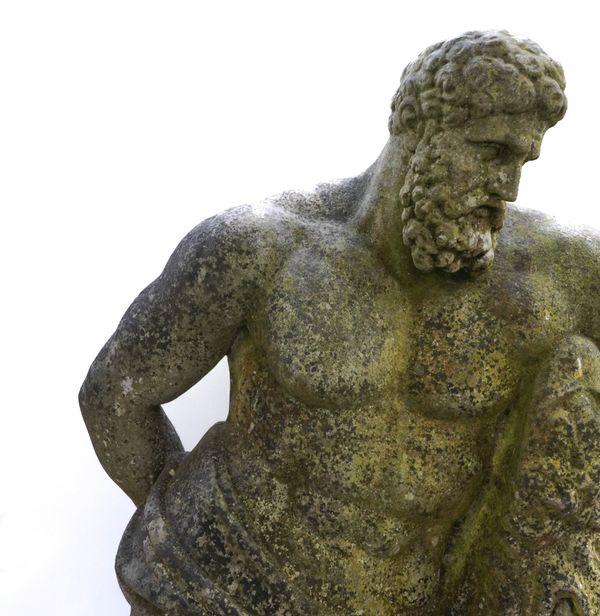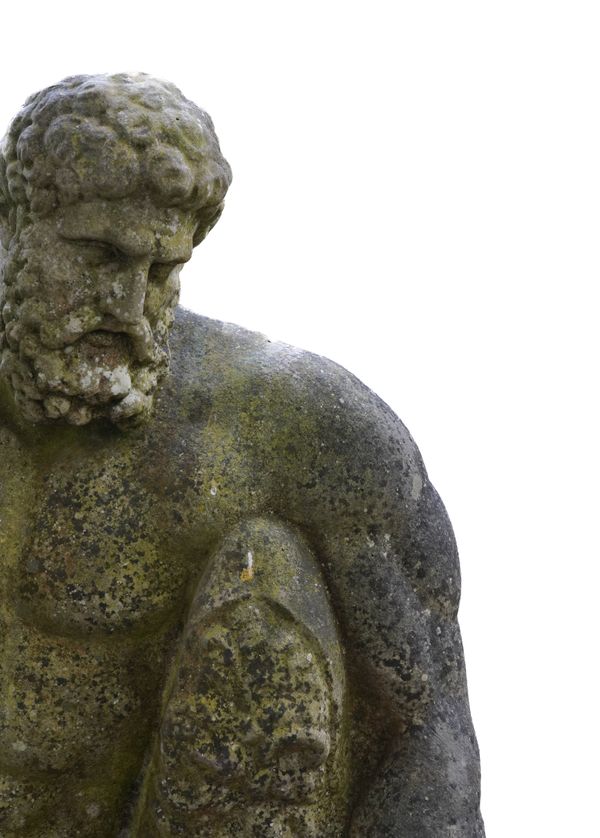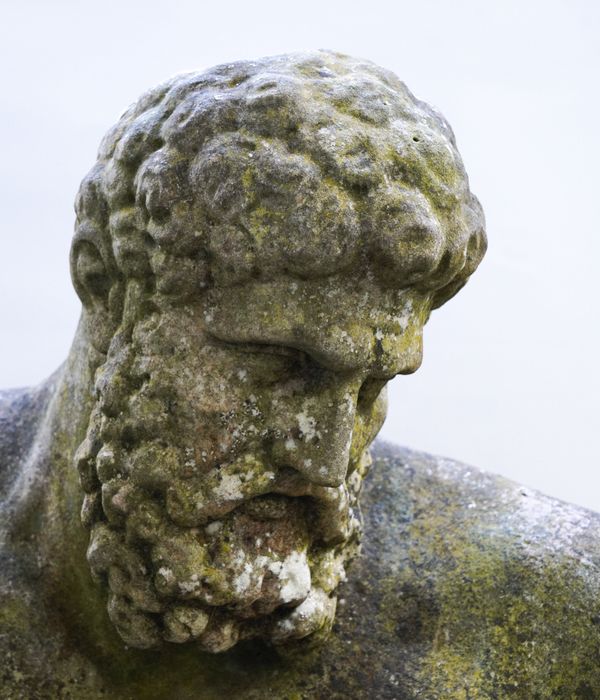AFTER THE ANTIQUE; A LIFE SIZE CARVED MARBLE FIGURE OF THE FARNESE HERCULES
19th century, carved in contrapposto, modelled with lion pelt, club and apples, 182cm high
| Estimate: | £8,000 - £12,000 |
| Hammer price: | £11,500 |
The Farnese Hercules is probably one of the most famous images of the mythic male hero imprinted upon Western culture. Standing three meters tall, the Farnese version of Hercules was carved in the early part of the 3rd Century AD and placed in the Roman Baths of Caracalla to be recovered 1546. It was based upon a much earlier Greek bronze figure, dating back to the 4th Century BC which was finally lost in the sacking of Constantinople in 1205 by the Crusaders.
Despite his strength, Hercules is depicted standing wearily, leaning on his club hewn from a mighty olive tree plucked from the ground, with the skin of the ferocious Nemean lion beneath his arm, who he'd fought and killed as one of his first Labours. In his opposing hand, held behind his back, are three golden apples stolen from the Garden of the Hesperides, one of his final tasks.




